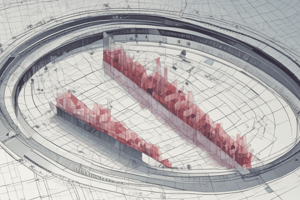Podcast
Questions and Answers
Explain what an Ishikawa diagram is and its purpose?
Explain what an Ishikawa diagram is and its purpose?
An Ishikawa diagram, also known as a fishbone diagram, is a visualization tool used to identify and analyze the potential causes of a specific event or problem. Its purpose is to outline the different steps in a process, demonstrate where quality control issues might arise, and determine which resources are required at specific times.
Who created the Ishikawa diagram and when?
Who created the Ishikawa diagram and when?
The Ishikawa diagram was created by Kaoru Ishikawa in the 1960s.
How are causes typically grouped in an Ishikawa diagram?
How are causes typically grouped in an Ishikawa diagram?
Causes are usually grouped into major categories to identify and classify the sources of variation.
What does an Ishikawa diagram resemble and how does it represent causes and outcomes?
What does an Ishikawa diagram resemble and how does it represent causes and outcomes?
What are the common uses of the Ishikawa diagram?
What are the common uses of the Ishikawa diagram?
What are the two main types of control charts?
What are the two main types of control charts?
What are control charts used for?
What are control charts used for?
What is the purpose of control charts in statistical process control?
What is the purpose of control charts in statistical process control?
What is another name for control charts?
What is another name for control charts?
What are distribution-free control charts and why are they becoming popular?
What are distribution-free control charts and why are they becoming popular?
Flashcards are hidden until you start studying





